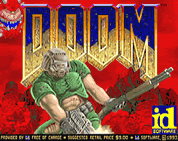 The IBM Simon was the first portable phone that combined modern telephone features with PDA capabilities. It could make cellular calls as well as send/receive faxes, email, and pages. The prototype was unveiled at the 1992 Comdex show and generated a lot of buzz, landing a picture on the front page of USA Today’s Money section. It’s often considered one of the first true smartphones.
The IBM Simon was the first portable phone that combined modern telephone features with PDA capabilities. It could make cellular calls as well as send/receive faxes, email, and pages. The prototype was unveiled at the 1992 Comdex show and generated a lot of buzz, landing a picture on the front page of USA Today’s Money section. It’s often considered one of the first true smartphones.
It was available for $899 with a two-year contract, and included several apps that are now staples of the modern smart phone. This included a calendar, appointment book, a world clock, and it supported hand written notes on an electronic notepad. It was available with optional accessories such as an RJ11 adapter and a slot for a pager card. The proprietary file system ran under a custom OS dubbed Navigator.
Although it was popular, it was soon eclipsed by other devices beginning to appear on the market and disappeared after only six short months.



